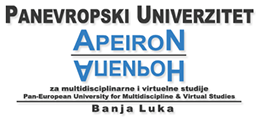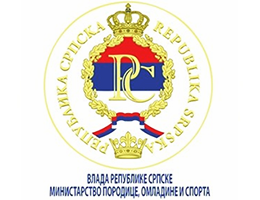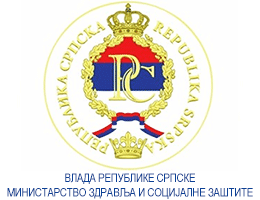Comparative Study : Structured Motor Skill Training and Unstructured Motor Skill Training in Improving Children’s Movement Ability
Volume 15, Issue 1 (2025)
Volume 15, Issue 1 (2025)
Comparative Study : Structured Motor Skill Training and Unstructured Motor Skill Training in Improving Children’s Movement Ability
Apstrakt:
This study aims to compare the effectiveness of structured motor skill training and unstructured motor skill
training in improving movement skills in children. The movement skills in question include coordination, balance, strength,
and agility. This study used an experimental design with a control group and a treatment group. The group of children was
divided into two groups: one group did structured motor skill training and the other group did unstructured motor skill
training. The population of this study was children aged 6-8 years. The sample was randomly drawn and consisted of 40
children divided into two groups, each group consisting of 20 children. The exercises were conducted for 6 weeks with a frequency
of 2 times per week. Each training session lasted for 40 minutes. Based on the results of data analysis, there is a significant
difference between structured motor skill training and unstructured motor skill training in improving motor skills.
The group that followed structured motor skill training had an average improvement of 19.75, while the group that followed
unstructured motor skill training had an average improvement of 12.85. The mean difference between the two groups was
6.90, indicating that structured motor skill training provided better results. A t-value of 7.71 and a significance value of
0.00 indicated that this difference was highly statistically significant. In addition, the percentage difference between the two
types of exercises was approximately 53.7%, indicating that structured motor skill trainingprovided greater improvement
compared to unstructured motor skill training. A planned and structured exercise program can result in more significant
improvements in children’s coordination, balance, strength and agility. These findings support the use of structured motor
skill training programs in the development of children’s movement skills in schools or physical education environments.
Ključne riječi:
Physical Activity, Motor Skill Training, Movement Ability, Children.
Puni tekst:
Reference:
Dapp, L. C., Gashaj, V., & Roebers, C. M. (2021). Physical activity and motor skills in children: A differentiated approach. Psychology of Sport
and Exercise, 54, 101916.
Darmadi, H., & MM, M. M. (2018). Asyiknya belajar sambil bermain. Guepedia.
Farida, A. (2016). Urgensi perkembangan motorik kasar pada perkembangan anak usia dini. Jurnal Raudhah, 4(2).
Gallahue, D. L., & Donnelly, F. C. (2007). Developmental physical education for all children. Human Kinetics.
Ginsburg, K. R., on Psychosocial Aspects of Child, C., Health, F., & others. (2007). The importance of play in promoting healthy child development
and maintaining strong parent-child bonds. Pediatrics, 119(1), 182–191.
Goodway, J. D., Ozmun, J. C., & Gallahue, D. L. (2013). Motor development in young children. In Handbook of research on the education of
young children (pp. 103–115). Routledge.
Hanson, M. A. B. (1992). Developing the motor creativity of elementary school physical education students. University of Georgia.
Hills, A. P., King, N. A., & Armstrong, T. P. (2007). The contribution of physical activity and sedentary behaviours to the growth and development
of children and adolescents: implications for overweight and obesity. Sports Medicine, 37, 533–545.
Hollis, J. L., Williams, A. J., Sutherland, R., Campbell, E., Nathan, N., Wolfenden, L., Morgan, P. J., Lubans, D. R., & Wiggers, J. (2016). A
systematic review and meta-analysis of moderate-to-vigorous physical activity levels in elementary school physical education lessons.
Preventive Medicine, 86, 34–54.
Jafar, M., Rinaldy, A., & Yunus, M. (2023). Improving student motor skills through a structured physical training program. J. Adv. Sports Phys.
Educ, 6(05), 82–95.
Khadijah, M. A., & Amelia, N. (2020). Perkembangan fisik motorik anak usia dini: teori dan praktik. Prenada media.
Logan, S. W., Robinson, L. E., Rudisill, M. E., Wadsworth, D. D., & Morera, M. (2014). The comparison of school-age children’s performance
on two motor assessments: the Test of Gross Motor Development and the Movement Assessment Battery for Children. Physical Education
and Sport Pedagogy, 19(1), 48–59.
Pellegrini, A. D. (2009). The role of play in human development. Oxford University Press, Inc.
Sepriadi, S. S. (2023). Model Permainan Bagi Kebugaran Jasmani Siswa Sekolah Dasar. PT. RajaGrafindo Persada-Rajawali Pers.
Sudirjo, E., & Alif, M. N. (2018). Pertumbuhan dan Perkembangan Motorik: Konsep Perkembangan dan Pertumbuhan Fisik dan Gerak Manusia.
UPI Sumedang Press.
Susanto, S. et al. (2022). Traditional Sport-Based Physical Education Learning Model in Character Improvement and Critical Thinking of
Elementary School Students. SPORTS SCIENCE AND HEALTH, 24(2), 165-172.
Susanto, S., Setyawan, H., García-Jiménez, J. V., Pavlovic, R., Nowak, A. M., & Susanto, N. (2024). Analysis of One-Hole Game Tools in
Developing Fine Motor Skills in Early Childhood. SPORTS SCIENCE AND HEALTH, 27(V), 135-139.
Susanto, S., Setyawan, H., Susanto, N., García-Jiménez, J. V., Latino, F., Tafuri, F., & Eken, Ö. (2024). The Influence of Modified One-Hole
Game Media in Improving Fine Motor Skills in Early Childhood. SPORTS SCIENCE AND HEALTH, 27(V), 151-156.
Susanto, S. (2024). The Effect of Using a Paralon Bow on the Archery Performance of Novice Athletes. Innovative: Journal Of Social Science
Research, 4(3), 11185-11197.
Tortella, P., Haga, M., Loras, H., Sigmundsson, H., & Fumagalli, G. (2016). Motor skill development in Italian pre-school children induced by
structured activities in a specific playground. PloS One, 11(7), e0160244.
Valentini, N. C. (2012). Validity and reliability of the TGMD-2 for Brazilian children. Journal of Motor Behavior, 44(4), 275–280.
Van Dyck, D., Baijot, S., Aeby, A., De Tiège, X., & Deconinck, N. (2022). Cognitive, perceptual, and motor profiles of school-aged children
with developmental coordination disorder. Frontiers in Psychology, 13, 860766.
Wilson, P., Ruddock, S., Rahimi-Golkhandan, S., Piek, J., Sugden, D., Green, D., & Steenbergen, B. (2020). Cognitive and motor function in
developmental coordination disorder. Developmental Medicine \& Child Neurology, 62(11), 1317–1323.






